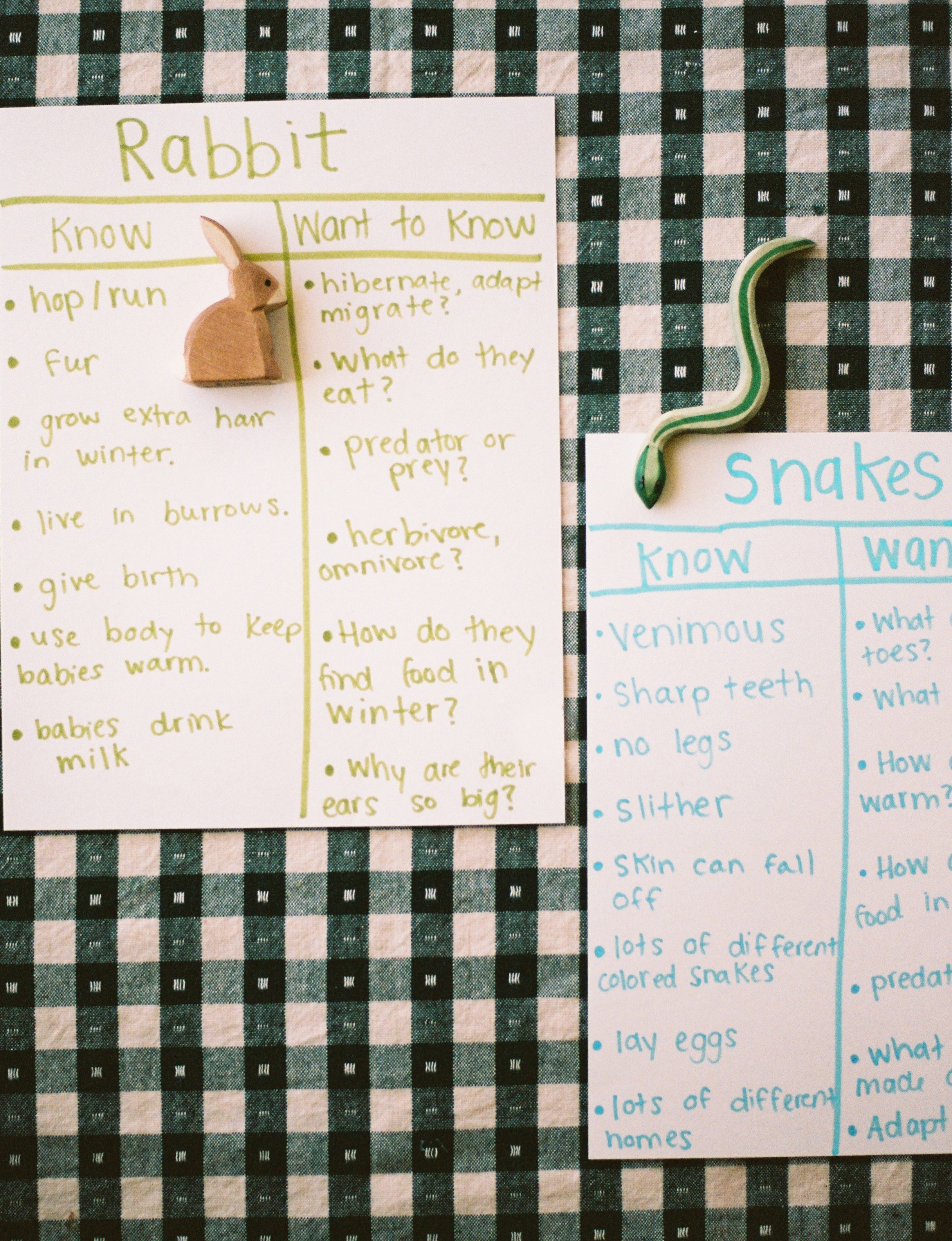
Animal Study: Part I
LESSON 5
Children deepen their understanding of the selected animal as they dive into learning more about it.
Paper and Pencil
Books or access to information about the animal your child chose in the previous lesson.
Materials
Gather materials
Preparations
Facilitate the creation of the KWL chart, encouraging the child to share their knowledge and curiosity.
Guide the child in formulating questions about their chosen animal, emphasizing winter survival aspects.
Assist in the research process, utilizing resources to find answers to the child's questions.
Reinforce connections between the chosen animal's features and its winter survival strategies.
Objectives for Teachers
Children engage in active learning by participating in the creation of a KWL chart.
Children explore their chosen animal's characteristics, behaviors, and adaptations.
Children develop research skills by seeking answers to questions about the chosen animal.
Children strengthen understanding of winter survival strategies specific to the chosen animal.
Objectives for Children

Collect and Connect
Practice saying the poem together with the actions you came up with.
Animals in Winter
When winter comes and it starts to snow,
Animals need food and a place to go.
Bears sleep tight in their den or cave.
Squirrels gather nuts to hide and save.
Birds fly south to the warmth and sun.
Beavers stay in homes until winter is done.

Activity Flow
Start off the lesson by sharing why we're doing this activity today— it is all about exploring the animal they chose and learning more about them using a KWL chart. The K stands for what we know, the W stands for what we want to know, and the L stands for what we learned.
Ask your child what they already know about their chosen animal. Write down their responses in the "K" section of the chart.
Transition to the "W" section and inquire about what your child wants to know. Focus on winter-related questions, such as survival strategies, adaptations, and behaviors during the colder months.
Discuss and add other general questions about the animal, such as diet, physical characteristics, and any specific behaviors unique to the species.
As you create the chart, encourage your child to think about how their chosen animal copes with winter, considering whether it adapts, hibernates, or migrates.
Use available resources, such as books or the internet, to find answers to the questions in the "W" section. Write down the newly acquired knowledge in the "L" section on the back of the paper. Explore together, discussing each discovered fact and reinforcing connections to winter survival.
Wrap up the lesson by reviewing the completed KWL chart. Discuss the new information learned about the chosen animal and how it specifically survives winter. Emphasize the joy of learning and encourage ongoing curiosity about animals.
Discuss any surprises or fascinating facts they discovered while creating the KWL chart. In the next lesson we will encourage them to share their newfound knowledge in a fun way.



